THE LANDSCAPING SOLUTIONS BLOG
Welcome to our Blog. Inspiration, updates and industry trends from the team at Landscaping Solutions.
NATURE’S SPOILS
Landscaping Solutions MD Ben West details the ‘rewilding’ of his own garden, from which he, his family and the local wildlife have already reaped rewards.

Rewilding your garden greatly benefits local wildlife.
Last month, we explored the concept of rewilding as an antidote to biodiversity loss and mitigation against the most damaging effects of climate change. I promised to share a snapshot of my garden’s ‘rewilding’ journey, which has so far consisted mainly of adopting a more relaxed attitude to maintenance practices and allowing ‘weed’ species to establish alongside ornamentals.
This approach has greatly benefitted local wildlife and helped my family develop a deeper connection to nature. Through learning the traits and practical applications of the various wild plants that have taken up residence, they have a visceral understanding of nature’s interconnectedness and their place therein. Modern life lived through these eyes is a blessing and a curse. There is truly never a dull moment.
Early in the year, hairy bittercress, dandelion and sow thistle add cleansing and nutritional value to our salads. We rejoice in the emergence of wild garlic and include it in all our cooking. Bright rays of flowering coltsfoot attract the first insects of spring such as the intriguing bee fly. Flowering ground ivy, herb robert and white dead nettle provide uplifting herbal teas.
Moth caterpillars start to show with angle shades feeding on self-seeded buddleia and broad- bordered yellow underwing hiding amongst patches of Cleavers. This plant epitomises the rising of the sap and we drink its juices to cleanse our lymphatic system and shift our metabolisms out of their winter torpor.
Orange tip butterflies are attracted to garlic mustard and we share their caterpillars’ liking for its leaves. They also lay eggs on cuckoo flower which lends a wasabi kick to our salads. Nettles have become a staple food now. Full of nutrients, they combine with fresh vegetables to form the basis for our favourite soup and also feed the larva of the Vanessid butterflies; Red Admiral, Small Tortoiseshell, Comma, Peacock and Painted Lady. Their split stems are weaved together to form cord from which trinkets are dangled from children’s necks and wrists.
Bird nesting begins in earnest and our ivy clad fence is well appreciated. Swift boxes set in the brickwork of our gable end fail to attract their target species but are taken up by house sparrows which enjoy the seeds of self-sown oxalis in the borders. Their constant chattering, at odds with the melancholy flute of the blackbird and the quicksilver outpourings of the blackcap in the willow, form the soundtrack to summer.
We embrace unloved elder by making refreshing summer drinks with its flowers and later medicinal syrups with its berries - blackbird and blackcap love it too. The plants that attract the most life are those that have found their own way here, none more so than the much maligned ragwort which is the centre of all insect activity throughout its long flowering period. Burnet companion, mother of pearl and cinnabar moths (and their caterpillars), gatekeeper and meadow brown butterflies and a host of parasitic wasps, hoverflies and bee species are in constant orbit.
I let fade away anything that fails to fend for itself and allow survivors to thrive; purple toadflax is one such survivor and attracts streams of bees through summer including the charismatic wool carder bee. By night, it is festooned with mother of pearl moths and garish toadflax brocade moth caterpillars. The almost identical larvae of the mullein moth can be found feeding on the foliage of its self - seeded namesake alongside pupating ladybird larvae. Shield bugs are up to no good in the shadows; stag beetles stick to the bricks of the house and demoiselles, damselflies and dragonflies clatter through the deepening foliage.
All life is here amongst these summer weeds. Wild medicinal herbs turn up and are infused to make teas: yarrow for sore throats, plantain for coughs, fennel for digestion and mugwort for lucid dreaming. Others are harvested and preserved in alcohol as tinctures to last through the winter: dock root, St John’s wort flowers and prickly lettuce leaves will treat everything from excitability to lethargy. Prickly lettuce also provides food for small ranunculus moth larvae. The reviled creeping thistle is a great nectar source for late summer insects and now attracts brown hairstreak butterflies to the garden. Grass snakes slither into the compost heap to lay eggs and hunt for rodents.
Moth numbers are peaking and a trap set up at night is a revelation. We are dazzled by the diversity of colours, patterns textures and forms. As summer flowers fade into autumn, dark bush crickets continue to fill the night air with whispering chirrups. At this time, ivy comes into its own. Its late emerging flowers are a major fuel source for insects. Stand beside a spunk scented spray on a sunny day in early autumn to see insect theatre play itself out before you. We really must regain our reverence for this plant.

Large white butterfly eggs.
One image of the unfurling year sticks in my mind. In the spring, I scattered nasturtium seeds in the corner of a raised planter and the rapidly developing foliage became a welcome addition to salads and pesto. Large white butterflies came to lay eggs on the undersides of the leaves. A great life lesson in lockdown for the kids as we observed the eggs through to the larval stage.
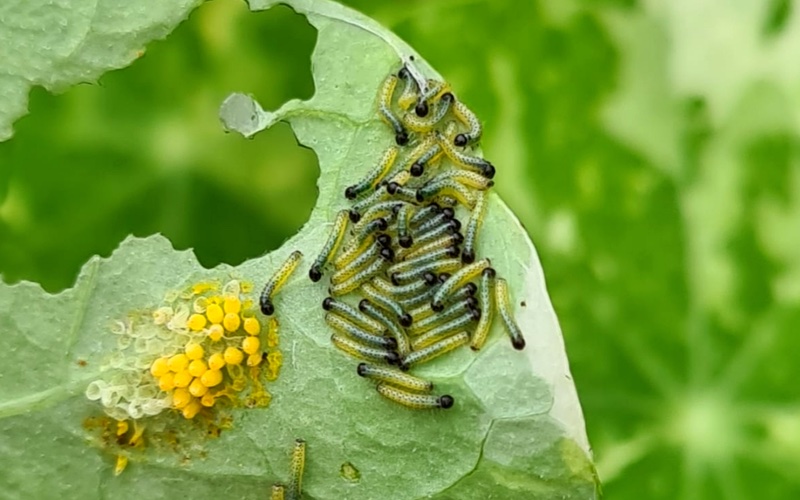
Emerging caterpillars on the underside of a nasturtium leaf.
The kids liked the fact we shared the caterpillars love of the peppery vegetation. As they dispersed to pupate, we searched for, and found, a cocoon and marvelled as the emerging imago pumped up its wings and flew away to continue the cycle.
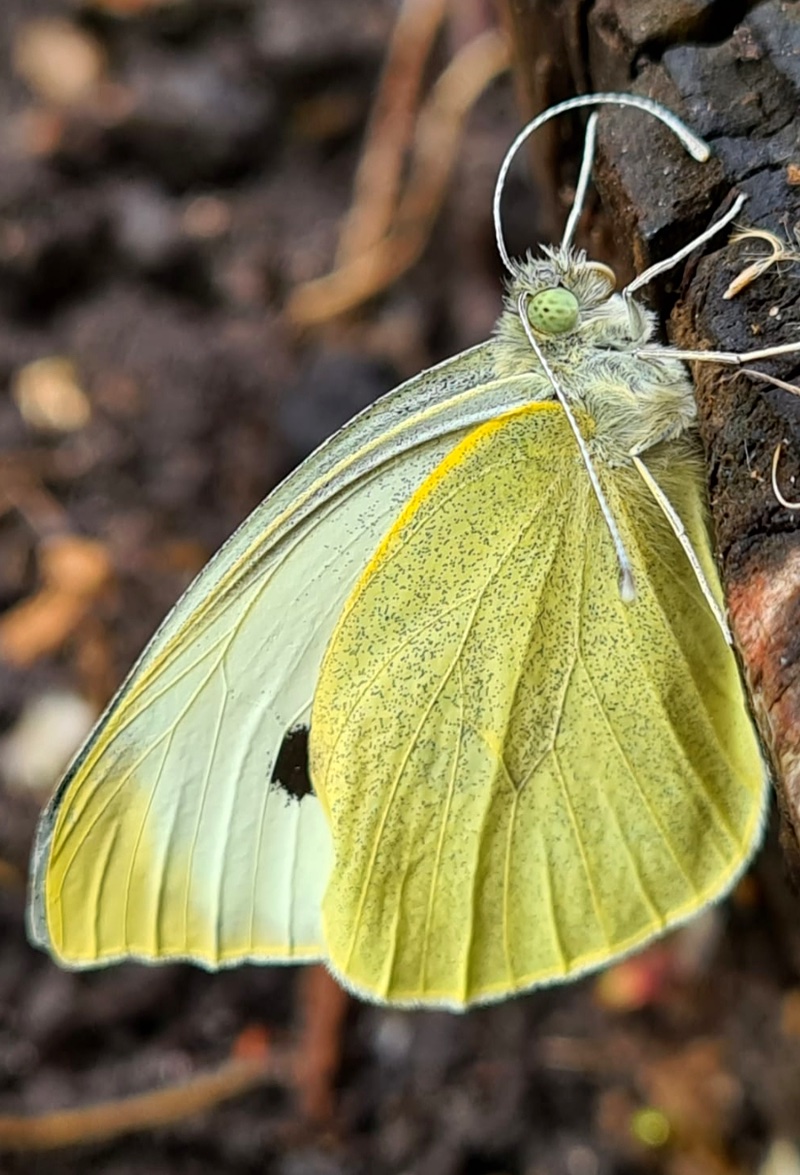
Large white adult Imago.
I wonder if, by embracing rewilding, we are like the caterpillar that, having stripped its food- plant bare and seemingly painted itself into a corner, now undergoes a strange and remarkable metamorphosis to emerge as a useful enhancement to the ecosystem and a jewel for the eye.
One thing is for sure; if the garden had been weeded, much of this richness of life would have been lost and never had the chance to enrich our lives so profoundly.
You can continue to follow Ben’s journey on Instagram: @wearewherethewildthingsare
THE RISE OF REWILDING
Rewilding is fortunately gaining traction, says Landscaping Solutions MD Ben West, and we all need to embrace it.
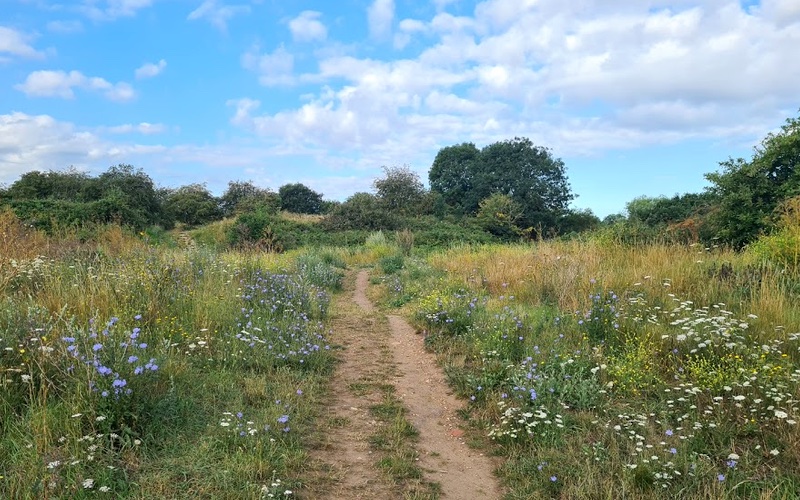
Embracing the concept of rewilding will help reduce biodiversity loss.
Of all the global-scale predicaments we currently face, I find biodiversity loss to be the most pernicious. The systematic, often wilful degradation of the source of our being and the accompanying depletion of the myriad wonders with which it is bejewelled, represent a deep source of personal pain and sorrow.
Furthermore, it’s an embedded phenomena. In 1987, I joined the Young Ornithologists’ Club and from the outset was haunted by the spectre of declining bird numbers reported through the pages of its quarterly publication. Later, I developed an interest in botany and lepidoptera and discovered these beset with the same issues: habitat destruction, poor land management, pollution and pesticides.
Across the board, it seems our relationship with nature is a dysfunctional one. This is doubly troubling for those of us who’ve had their lives immeasurably enriched through a love of nature, yet find ourselves complicit in its destruction by dint of being active in a system geared to that end. I’ve been carrying this baggage around for years. None of my school friends or subsequent work colleagues seemed conscious of these problems nor did they appear to care once awakened to them. Older folks, my parents included, dismissed the losses as collateral damage in the wake of ‘progress’. “Toward what?” I asked. A question invariably met with silence or a shrugging of shoulders.
However, lately it seems something has shifted. Awareness has spread and with it a commitment to change. Shoulders that once shrugged now seem set to carry the weight of the work ahead. Solutions are coming to the fore, most promisingly in the form of ‘rewilding’; the idea that depleted landscapes can be regenerated by allowing natural processes to re-emerge. In fact, it’s inaccurate to call rewilding an ‘idea’ as it’s now a proven model across Europe and well established in Britain as evidenced by the Carrigan Wildwood, Glenfenshie and Abernethy projects in Scotland and Ennerdale in northern England. The astonishing biological resurrection of the flagship British rewilding programme at the Knepp estate in Sussex and the bestseller status of ‘Wilding’, the story of its genesis by Isabella Tree, suggest this movement may be ready to roll out across the lowlands of southern England. Most recently, the ambitious WildEast initiative has pledged to rewild 250,000ha of East Anglia whilst simultaneously pushing the concept beyond the physical landscape and into the cultural practices and everyday lives of the areas’ inhabitants.
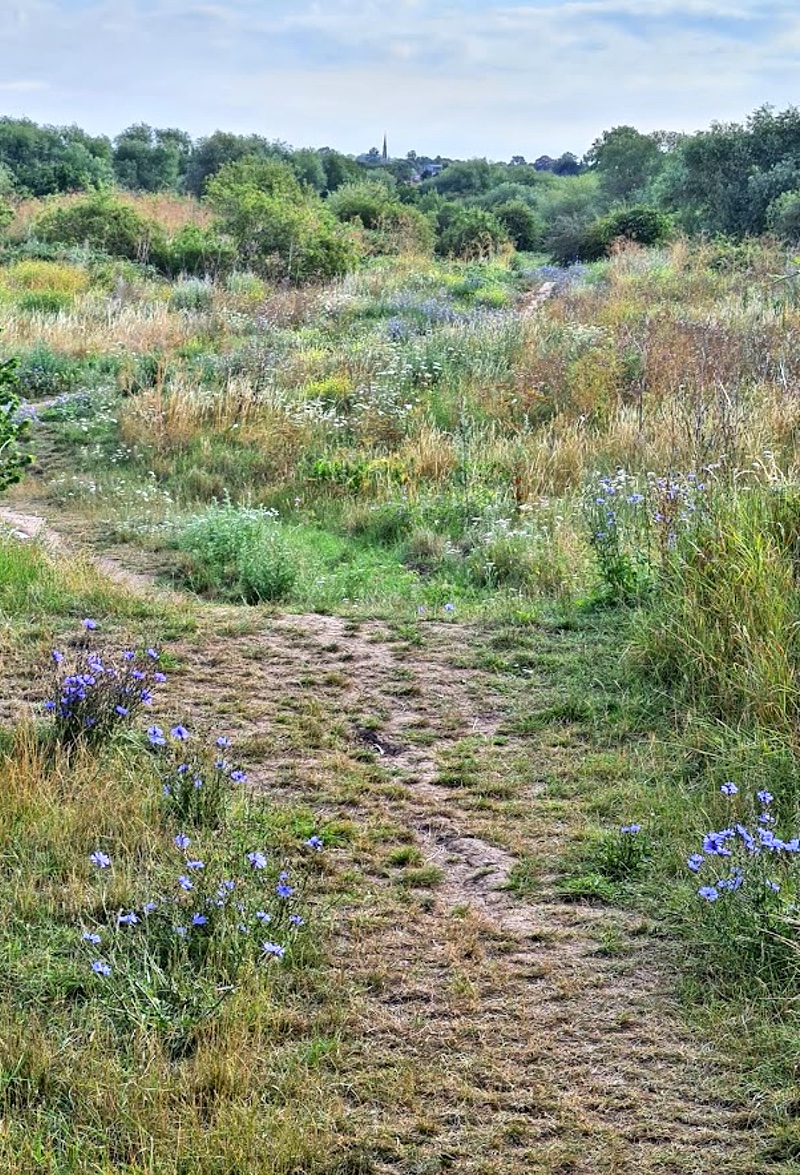
Rewilding allows once depleted landscapes to regenerate.
The acknowledgment of this cultural aspect emphasises a key point; rewilding is not just about the reinstatement of bison, beavers and wolves; nor does it necessitate the acquisition of vast tracts of land. Rewilding works on all levels to weave together the unravelled warp and weft of life’s rich tapestry and recognises humanity as an important thread.
Rewilding is also about wresting back dominion over consciousness from deceptive forces. We must first rewild ourselves before we can rewild our planet. What does that mean? Well, I’ve written previously on the Landscaping Solutions blog, of the need to relinquish our received wisdom around what constitutes ‘good gardening’ and acknowledge that we have increasingly been led down the garden path by snake oil salesmen. If you’re looking for evidence, consider how the ‘garden centre experience’ has changed over the past 30 years or so. Too many of our established practices are turning gardens into biological deserts when they are often the last refuge for wildlife in the face of habitat loss. As a reaction to this, I have, over the last couple of years, embraced the concept of rewilding in my own modest plot, and next month I shall share my experiences of that journey with you.
PROS OF PERMACULTURE
Landscaping Solutions MD Ben West explains what permaculture is and its sustainability benefits.
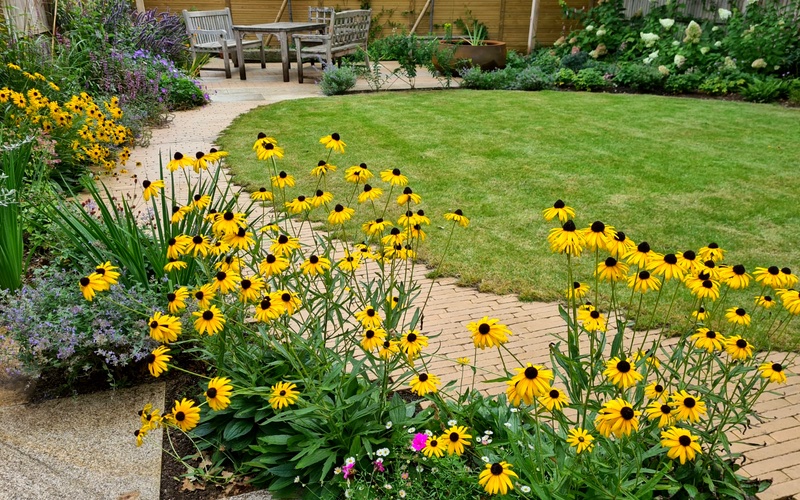
An example of permaculture garden design, built and maintained by Landscaping Solutions.
Last month I started to consider steps we might take, in lieu of top down leadership, to fashion solutions to the ‘sustainability problem’. Those in the industry looking to cut a path toward adopting fully regenerative practices have a ready sharpened tool in the form of ‘permaculture’, a system that can be applied to garden design as well as every other aspect of our lives. Permaculture design offers guidelines by which we can operate sustainably on a personal level and positively influence the actions of our clients.
Permaculture recognises the sustainability problem is rooted in the prevalence of economic models which overlook diverse, traditional and local operations in favour of monolithic global systems dependent on mass consumption of fossil fuels and resulting in cultural and environmental degradation. Permaculture eschews the global model and works to preserve and enhance the best of the existent. In short, it is the design of sustainable human habitats.
Australians Bill Mollison and David Holmgren introduced the concept with their 1978 book ‘Permaculture One’. They saw the current economic system as flawed and took inspiration from the propensity of natural ecosystems toward rejuvenation. Permaculture design closely observes nature, notes the connections between its manifold elements and uses these relationships to inform its work. It is opposed to the myth of separation and the harmful ‘survival of the fittest’ concept of nature in favour of a view of the natural world as a host of symbiotic relationships and interconnected ecosystems.
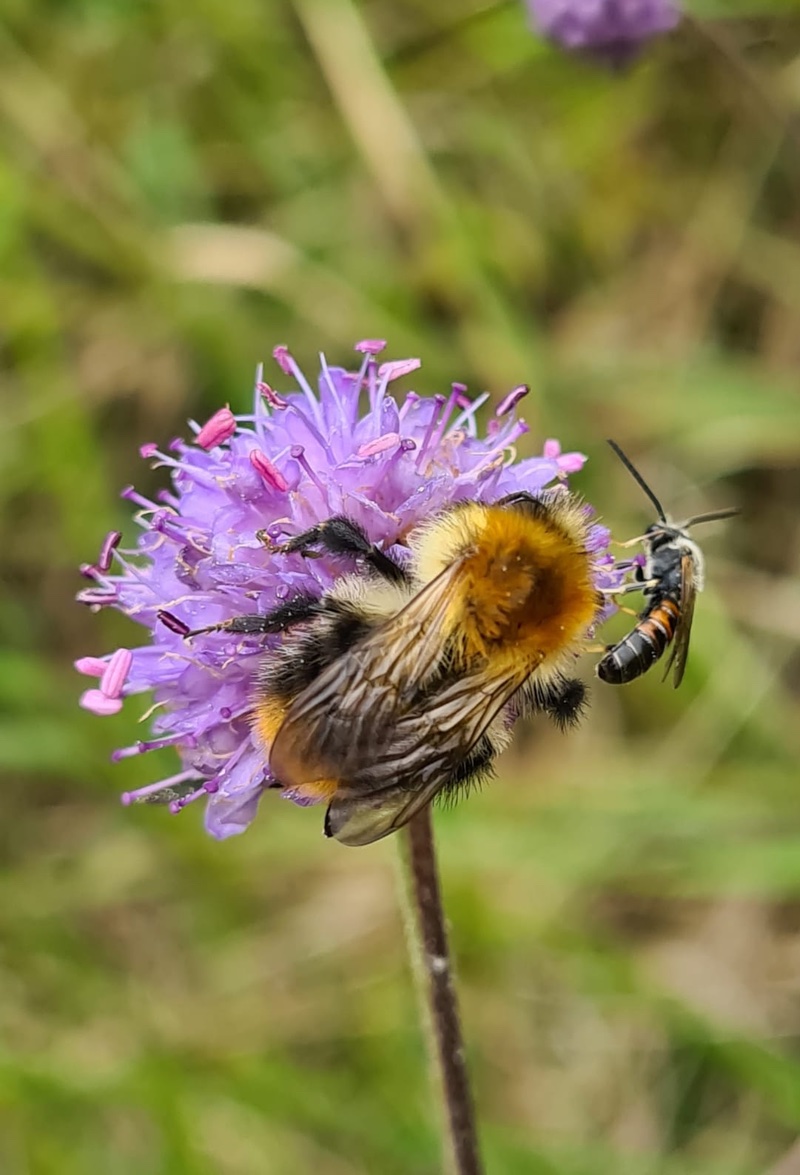
The difference between ‘standard’ garden or landscape design and permaculture design lies with the lens through which the decision making process is viewed - permaculture ethics. Simply stated, these are: Earth care, people care and fair shares. These principles inform all design choices. Earth care acknowledges our dependence on a healthy planet for survival and advocates its veneration and conservation. People care recognises the physical and emotional needs of modern humanity, and looks to utilise technology and intelligent design to avoid problems that made formerly sustainable modes of living untenable. Fair shares asserts the finite nature of the Earth, the need to establish limits to human consumption and balanced distributions of ‘wealth’.
Much modern garden and landscape design revolves around making things pretty rather than useful. Many plans please the eye but lack technical detail or practical function. We should not reject the aesthetic; rather, this aspect should flow naturally from a meticulously researched and beautifully realised design. Permaculture is all about the details.
This pragmatism is evident in the key concepts of ‘zones’ and ‘sectors’. Zoning brings elements requiring most attention closest to centres of human activity; vegetables and fruit close to the kitchen, for example. Less frequented areas are set aside for lower maintenance features. Sectoring considers the influence of exterior factors such as wind, rainfall, light, views, local flora, fauna and architecture, and incorporates these into the design to create beneficial connections between the elements. The needs of one are met by the outputs of another; soft vegetative prunings become mulch via the compost heap, for example. Each element performs multiple functions thus maximising the overall efficiency of the whole. The aim is to form a ‘closed system’ in which energy, nutrients and resources are recycled rather than lost. Like a natural ecosystem, nothing goes to waste and everything has value.
In order to achieve our regenerative goals, we must work wisely with what we have rather than expend valuable energy in a protracted and dysfunctional struggle to bend nature to our will.
Visit www.permaculture.org.uk for further information and feel free do drop us a line with your thoughts and feedback on Ben’s article at info@landscapingsolutionsltd.co.uk.
REDISCOVERING MOTHER NATURE
Landscaping Solutions MD Ben West explains why we need to get back in touch with nature and that compromise is key.
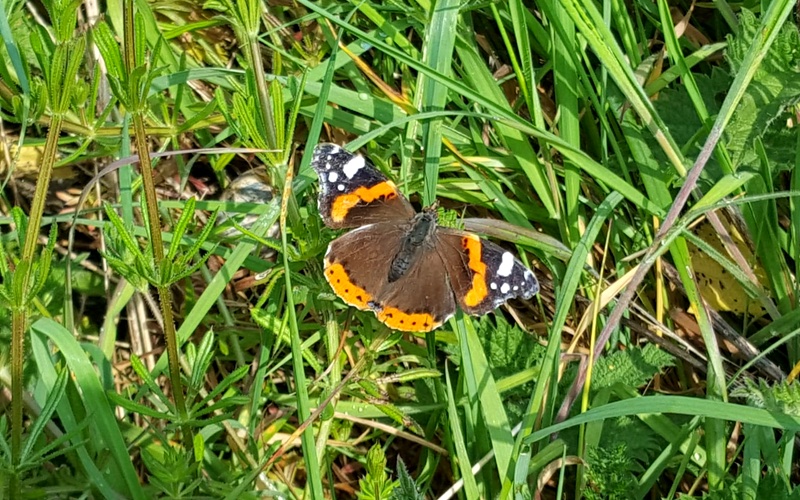
In last months article I focused mainly on the theoretical and practical problems we face in our relationship with the environment. If we are to continue to pursue the goal of ‘economic growth’, this term must come to mean something very different than hitherto. Going forward, all our actions must be scrutinised through the lens of sustainability or regeneration. Our current nescience in this area stems from our conceptual disconnect from nature. I stress ‘conceptual’ because it is all in the mind; literal disconnect from nature is impossible, for what are we but natural through and through? We have lost sight of this truth and therein lies the problem.
Lifestyles and schooling have blinded us to nature and our place in it. Worse still, many of us are filled with fear of plants, insects, fungi and the landscapes they inhabit. Those blind to nature have no incentive to love and nurture it. When we fall out of love, indifference and neglect set in. When we fall out of love with nature, we neglect ourselves.
COVID-19 can rekindle the flame. Nature is courting us again. She has asked us to slow down so that we might renew our acquaintance. The sun is shining, the birds are singing and there’s blossom on the vine. She is giving us another chance to remember who she is and how good we are together. Maybe we could give it another shot? Let’s allow ourselves to fall under her spell once more. Let’s reaffirm our vows, and this time, let’s honour them. We would do well to remember that hell hath no fury like a woman scorned. If we fall back into our gallivanting, will her benevolence endure?
Successful relationships are built on compromise. For this relationship to be more than just a fleeting affair we need to meet her halfway. We need to surrender the conceit of the world as dead matter at our disposal and dismantle our dominator culture in order to learn lessons from life forms far older than us that have evolved to live harmoniously with nature; plants, for instance. They can be the great levellers. Let them be our teachers and the garden our classroom - or more appropriately our forum, for this is a conversation, an exchange of ideas amongst equals.
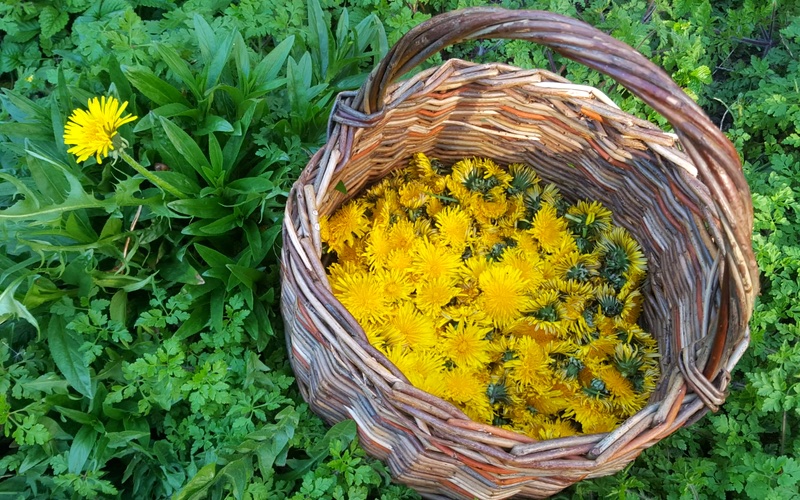
All gardens have something in common whether we like it or not - weeds. I’ve written previously of the biodiversity benefits of allowing weeds to grow. What if I told you consuming weeds can also help us remember who we are? As I write I see before me a host of garden weeds; dandelion, herb robert, nipplewort, plantain, sow thistle, sorrel, ramsons, goosefoot, cleavers, bittercress, burdock. I could go on. All have long nourished and healed us. The rediscovery of a forgotten world of varied flavours and textures, a world beyond the restricted palette of supermarket fruit and veg, is liberating and empowering. It’s also an act of defiance; we are connected once more to our ancestry and environment on a visceral level. Food and medicine are not only found upon shelves, they are products of the feral earth. The health benefits are myriad, both in the inherent nutritional value of the wild foodstuffs and the healing communion with nature. Thousands of years of evolution cannot be quashed in a handful of generations. This stuff is deep within us. Most describe this kind of reconnection as a ‘coming home’.
Weeds in ‘wild’ gardens expose us to a more intimate, egalitarian, interconnected understanding of nature, and thereby of ourselves. A great deal is at stake if we do not regain our capacity to converse with her. Small steps shall set us on our way.
Landscaping Solutions team of talented garden designers and craftspeople are passionate about creating and managing ecological, sustainable and resilient gardens fit for the 21st century. Get in touch to get the ball rolling on your project in 2021.